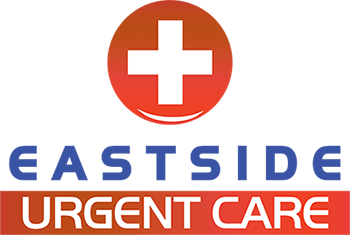Ingrown Toenail Removal Treatment Specialist in Cincinnati, OH
An ingrown nail happens when the nail grows into the skin or when the skin on one or both sides of the nail grows over the nail’s edges. An ingrown toenail may initially be painful, large, and rigid. Later on, it could feel really painful and get red and infected. Ingrown toenail removal treatment is available at Eastside Urgent Care. For more information, contact us or book an appointment. You can also visit us online to get directions to our clinic. We are conveniently located at 872 Ohio Pike, Cincinnati, OH 45245.


Table of Contents:
What is the main cause of ingrown toenails?
What happens if you leave an ingrown toenail alone?
How do I get rid of my ingrown toenail?
Will urgent care remove an ingrown toenail?
Ingrown toenails are fairly common and can typically be easily remedied at home if caught early. Some people are more prone to developing ingrown toenails, in which case some more intensive measures may need to be taken to prevent the toenail from becoming ingrown again in the future.
There are a few reasons why you may be suffering from ingrown toenails, some of which are likely preventable, and others being the result of injuries or health conditions. The most common reasons why an individual would develop an ingrown toenail include frequently wearing shoes that do not fit properly, often being too tight around the toes, or cutting the toenails too short or not straight across. Certain health conditions that affect the feet can also make some individuals more prone to developing ingrown toenails, such as bunions, fungal infections, and hammer toes. There is also a genetic component to being more prone to develop ingrown toenails, as well as the way that the toenail naturally grows can make an individual more likely to develop an ingrown toenail (such as if the toenails are overly curled). So, while there is no single cause that can concretely lead to ingrown toenails, there are a few things that those who are more prone to developing ingrown toenails can keep in mind.
Ingrown toenails do not heal on their own, but if treated early, can easily be treated with at-home remedies. If you do not treat the ingrown toenail early on and continue to let it worsen without any medical interventions, it can lead to worsening pain, as well as the formation of an infection and/or abscess that will continue to worsen until treatment has been sought. The progression of an untreated ingrown toenail will typically proceed as follows:
• The nail will start to dig into the skin surrounding the nail on the toe, leading to pain, inflammation, and minor swelling at the corner of the nail.
• The inflammation can turn into an infection, sometimes causing pus or blood to leak from the corner of the nail.
• New skin may develop over the open infection, causing the infection to continue to worsen and potentially spread to the surrounding tissue including surrounding bones.
Leaving the ingrown toenail without any medical interventions even after an infection has developed and progressed can turn into a very serious situation, with the infection affecting the bone, or leading to the death and decay of the infected tissue. It is fairly easy to treat an ingrown toenail before it starts to progress, preventing any further pain and the development of an infection from occurring in the first place.
If you have an ingrown toenail that is still in the very early stages of development, an effective at-home remedy involves soaking the affected toe in warm water for about 15 minutes 2 to 3 times daily. After each soak, it is recommended that patients wedge a small piece of wet cotton, such as from a cotton ball, under the corner of the toenail that has become ingrown to help lift the nail off of the skin. This piece of cotton should be removed every time the toe is soaked and then replaced with a clean piece of cotton. It is recommended that patients continue to do this 2 to 3 times daily until the toenail has grown out enough to be trimmed without the nail being too short.
If the ingrown toenail is causing a significant amount of pain or has become severe, medical attention should be sought as soon as possible to minimize the risk of infection.
If your ingrown toenail has progressed to the point of needing to visit an urgent care clinic, they may choose to remove the entire nail, there are also a few other treatment options that they may want to try first to avoid having to remove the entire toenail. Other treatment options include:
• Taping the nail to pull the skin away from the ingrown nail.
• The placement of a gutter splint under the nail, which will stay in place until the nail has grown above the skin edge, effectively easing the pain that is associated with the ingrown nail in the process.
• Removing a portion of the nail if the ingrown toenail has become severe.
If the entire nail has to be removed, some of the underlying tissue may also need to be removed to prevent part of the nail from growing back. An entire toenail removal will typically involve numbing the toe and then using a laser, chemical, or other method to remove the affected toenail and some of the affected nail bed. To see a healthcare professional at Eastside Urgent Care, book an appointment online or simply walk in! We are conveniently located at 872 Ohio Pike Cincinnati, OH 45245. We serve patients from Cincinnati OH, Covedale OH, Delhi OH, St Bernard OH, Wilders KY, and Elmwood Place OH.

Additional Services You May Need
▸ Asthma
▸ Bronchitis
▸ DOT Physical
▸ Employment Drug Screen
▸ Illness
▸ Injury
▸ Insect and Animal Bites
▸ Occupational Medicine
▸ Pediatric Visit
▸ Pre-OP Physical
▸ School & Sports Physicals
▸ STD And Treatment
▸ Rash/Allergic Reaction
▸ Stomach Flu Treatment

Additional Services You May Need
▸ Asthma
▸ Bronchitis
▸ DOT Physical
▸ Employment Drug Screen
▸ Illness
▸ Injury
▸ Insect and Animal Bites
▸ Occupational Medicine
▸ Pediatric Visit
▸ Pre-OP Physical
▸ School & Sports Physicals
▸ STD And Treatment
▸ Rash/Allergic Reaction
▸ Stomach Flu Treatment



